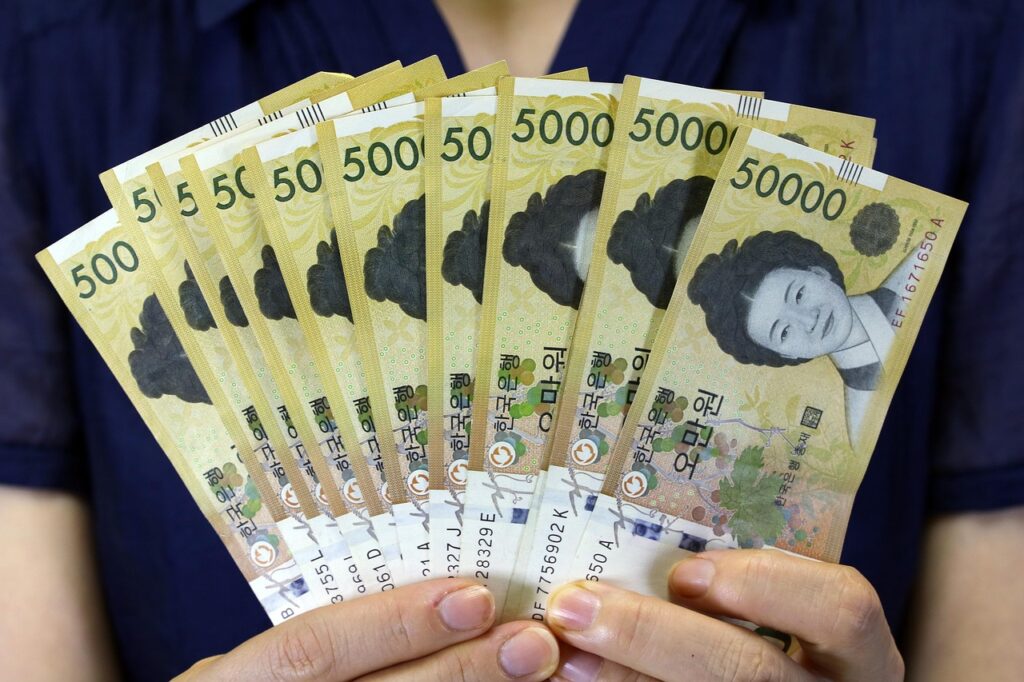Introduction: Budgeting for Life in Korea
Moving, studying, or working abroad always starts with one basic question: How much will it cost? Korea has many attractions — modern cities, beautiful nature, good public safety, and reliable public infrastructure. But to live comfortably, you need a realistic sense of what day-to-day expenses look like. This guide is for travelers, international students, expatriates, and anyone planning a stay in Korea. We’ll break down typical costs, compare different cities, explore how lifestyle choices affect spending, and offer tips to make your money go further.
1. How Costs Vary: City, Lifestyle, and Season
Living cost in Korea depends on several key factors: where you live, how you live, and what season it is.
- City matters: Seoul is generally the most expensive city, but other cities such as Busan, Daegu, Incheon, and Jeju offer different cost levels.
- Lifestyle matters: Your choice of housing type, how often you eat out, your level of comfort in travel and entertainment, etc., all change your budget.
- Seasonal variation: Heating in winter, cooling in summer, differences in energy bills and utility usage can affect costs substantially.
Below are examples of likely monthly budgets (without luxury excess) in 2025, based on typical levels of comfort.
2. Budget Scenarios: Singles and Couples
2.1 Budget Level: Basic Comfort
- Living in a smaller city (outside the central Seoul area) or on the fringes of Seoul
- Modest dining out, some cooking at home
- Normal public transport usage, occasional outing
Estimate for one person: roughly ₩1,400,000 ~ ₩1,800,000 per month
This includes housing (basic) + utilities + food + regular transport + basic leisure but excludes expensive extras like frequent flights or luxury shopping.
2.2 Mid-Comfort Level
- Living in central or well-connected part of a larger city
- Dining out 2-3 times weekly in mid-range restaurants
- Regular transport, occasional travel, modest luxury purchases
Estimate for one person: roughly ₩1,800,000 ~ ₩2,300,000 per month
2.3 Dual income / dual lifestyle / couples or two roommates
When costs (rent, utilities, groceries) are shared, some expenses per person go down, but total cost rises.
Estimate for two people / small family (without children): roughly ₩2,500,000 ~ ₩3,500,000
This assumes a comfortable but not ultra-luxurious lifestyle.

3. Housing Costs: What to Expect
3.1 Types of Housing
- One-room studios and officetels (often studio with small kitchenette and bathroom)
- Shared housing or roommates may reduce cost
- Apartment vs older buildings; new vs old; location near subway/station vs further out
- Deposit systems: many leases require a security deposit (called “key money” or jeonse / wolse terms), sometimes offset by lower rent.
3.2 Monthly Rent Examples
- In less central areas, smaller apartments might cost ₩500,000-₩800,000 monthly.
- In well-connected, central areas, apartments may cost ₩800,000-₩1,500,000 or more depending on size, condition, and proximity to transit.
- Shared housing options or guesthouses may reduce cost significantly for students or short-term stays.
3.3 Utilities and Heating / Cooling
- Utilities (electricity, water, gas) add to monthly cost.
- Winter heating costs can be high, especially with floor heating.
- Summer air conditioning also adds depending on insulation and usage.
- In more moderate climates (e.g. coastal areas), utility load may be less; insulation and building quality matter.
4. Food and Groceries: Everyday Eating
4.1 Eating Out
- A meal at a modest restaurant may cost roughly ₩6,000-₩15,000 depending on the type and location (local meals vs more upscale).
- Street food, local markets, casual cafés are often cheaper, while international cuisine, imported‐food restaurants, or fine dining cost more.
- Eating out often (vs cooking at home) increases your monthly expenses noticeably.
4.2 Groceries and Home Cooking
- Basic groceries (rice, eggs, vegetables, milk) have moderate prices, but imported or specialty items cost more.
- Cooking at home helps reduce total cost, especially if you shop at markets, discount stores, or use local produce.
- Healthier or organic options sometimes cost more; individual preferences matter.
4.3 Snacks, Coffee, Socializing
- Coffee and café visits are common; cost depends on brand and location.
- Socializing often involves eating and cafés; budget for coffee and snacks if you plan to explore urban cafés regularly.
5. Transport Costs: Getting Around
5.1 Public Transit
- Metro (subway) and bus systems are efficient and widely available. Fares are reasonable, and many users use rechargeable transport cards.
- Transfer discounts often apply when using transport cards; using same card for multiple rides helps.
- Taxis are available but cost more; using them often raises monthly transport cost.
5.2 Intercity Travel
- Buses, trains, and express services between cities may add occasional cost.
- Short trips to neighboring cities or weekend getaways may influence your transport budget.
5.3 Budget Tips
- Use public transit passes or rechargeable transport cards.
- Avoid overreliance on taxis unless necessary.
- Plan trips to reduce transport cost (grouping errands, choosing convenient housing close to work or school, etc.).
6. Additional Monthly Expenses
6.1 Communication: Mobile, Internet
- Mobile phone plans and data usage vary in price; many choices exist from budget to premium.
- Internet for home, streaming subscriptions, etc., add cost.
- Prepaid vs contract, plan choice, data usage matter.
6.2 Insurance and Health
- Health insurance, whether national or private, is a regular cost.
- Medical visits, dental, vision care, etc. may involve co-pays or fees depending on insurance status.
- Vaccinations, checkups, medication may add seasonal costs.
6.3 Leisure and Entertainment
- Gym or fitness classes, cultural activities, movies, concerts, exhibitions, travel within Korea.
- Social activities, clothing, occasional shopping, etc., all pile up depending on how social your lifestyle is.
6.4 Occasional & seasonal costs
- Travel home, visiting other cities, weekend trips, or tourist activities
- Seasonal clothing, special purchases, gifts, etc.
- Heating in winter; cooling in summer; festivals and events may add cost.
7. Costs for Families and Children
- Families with children will need to budget for additional expenses: child care, school supplies, clothing, extra food, outings, possibly tuition or language lessons, etc.
- Educational needs, extracurricular activities, travel, and home size all influence cost.
- In more rural or suburban areas, cost may be lower; schools or commute may complicate budget.
- Some families may choose larger apartments, better amenities, so cost can vary widely; planning realistic expenses really matters.
8. Inflation, Price Trends & Cost Changes in 2025
- Prices for food, imported goods, utilities, and housing have been rising gradually; inflation affects day-to-day costs.
- Some items (electricity, heating) may spike in winter; imported goods might cost more; some markets may adjust pricing.
- Flat or slow rent increases in some older buildings may help, but new apartments often come with higher costs.
- Keep an eye on changing costs, especially if you plan long-term residence; adjust budget periodically.
9. Ways to Save & Manage Your Budget
9.1 Smart Housing Choices
- Consider locations slightly further from central hubs if transport is good; rent may be cheaper.
- Share living space or roommates if possible to reduce cost per person.
- Negotiate rent or lease terms, where appropriate; understand deposit vs rent tradeoffs.
9.2 Cooking & Eating Strategies
- Balance eating out and cooking; choose local markets for fresh produce; use discount stores.
- Try local meals rather than always imported options.
- Avoid unnecessary luxury food items if budget is important.
9.3 Transport Planning
- Use transport cards and take advantage of transfer discounts.
- Plan housing near stations to reduce commute cost and time.
- Use public transit instead of taxis where possible.
9.4 Energy & Utility Use
- Be mindful of heating and cooling use; adjust for efficiency.
- Choose energy-efficient appliances, if possible; be aware of insulation and building energy characteristics.
- Monitor monthly bills; adjust behavior (turn off lights, reduce A/C or heat when not needed, etc.).
9.5 Lifestyle Balance
- Decide how much comfort matters vs savings (e.g. dining out, travel, shopping).
- Allocate a budget for socializing and fun, but be realistic.
- Track your expenses frequently; adjust your budget as you learn actual costs.
Conclusion: Budget According to Your Choices
Cost of living in Korea in 2025 can be very manageable — or more expensive — depending on your lifestyle, location, and spending habits. There is no one “correct” budget, but realistic planning helps avoid unexpected expenses and allows you to enjoy your stay in Korea with confidence.
Start with your expected housing options, transport needs, and food habits. Make a rough budget estimate, then adjust based on actual bills and local prices. Over time, you will find your own comfortable balance between cost and quality of life.

